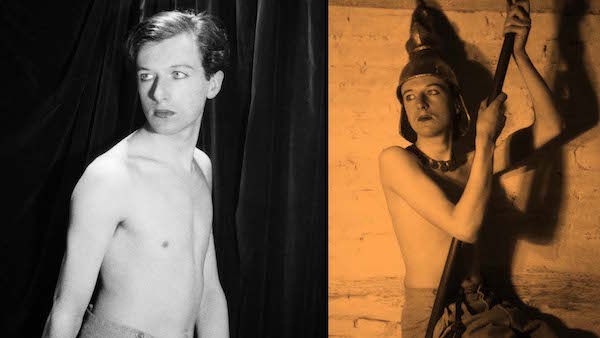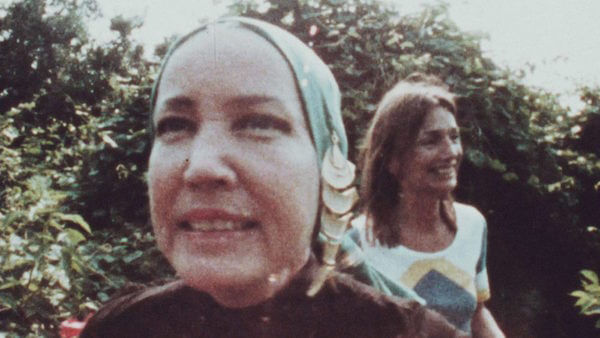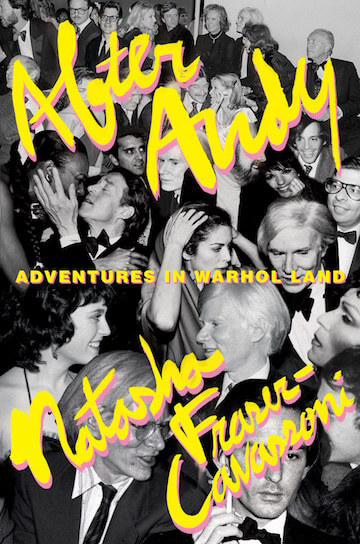Katharine Hepburn in David Lean’s1955 “Summertime.” | FILM FORUM
BY DAVID NOH For the month of December, Film Forum is offering a selection of post-World War II movies shot in Italy, for its series “Roman Hollywood: American Movies go to Italy.” Those years were booming in terms of cinema, with American filmmakers attracted by the lure of tax breaks, cheaper production costs, Rome’s own movie factory Cinecittà, and the fascinatingly colorful country itself, recently war-torn as it was.
The selections amount to one of the most eclectic ever in Film Forum’s nigh-50-year history, with everything from the inescapable “Godfather” trilogy (Dec. 8, 12:30 p.m., 4 p.m., 8 p.m.) and Scorsese’s “Gangs of New York” (Dec. 8, 9:10 p.m.) to real rarities like the 1963 epic “Sodom and Gomorrah” (Dec. 11, 7:15 p.m.), directed by helmer-for-hire Robert Aldrich (well, why shouldn’t the director of “Whatever Happened to Baby Jane” and “Hush… Hush, Sweet Charlotte” be adept at ancient Biblical history, as well?) and “Francis of Assisi” from 1961 (Dec. 20, 12:30 p.m., 4:450 p.m., 9:10 p.m.) with Bradford Dillman, of all people, in the title role and Dolores Hart playing a nun, two years before she actually became one.
Two of the greatest screen divas, Ingrid Bergman and Anna Magnani, share the bill on December 14, when their films, “Stromboli” (1 p.m., 4 p.m., 8:35 p.m.) and “Volcano” (6:30 p.m.) respectively, will be screened. They also shared a great love, the director Roberto Rossellini, who made Magnani a legend (and his paramour) when he cast her in his ground-breaking neo-realist “Open City” but then dumped her when Bergman, desperate to make more authentically human films rather than glossy Hollywood fare, came to Italy to make “Stromboli” (and a hugely scandalous child, Renato, out of wedlock) with him. Both films are pretty turgid melodramas — with smoking volcanoes in the background to symbolize the seething passions of the unfortunate women they play. And, as much as I admire Bergman, Magnani (who at least gets to play an exiled hooker and how could that ever suck?) has the upper hand, for, with her astonishing empathic powers, volcanic — yes — human spirit, and rivetingly mobile, arresting face, she could make almost any role interesting, while Bergman, in a bland role, was always beautiful, but, well, bland. “Stromboli” is such dark primitive stuff, dramatically speaking, with her a tiresome victim, that it, like a number of Rossellini films, is a dank slog.
IN THE NOH: Film Forum’s salute to the boot, post-WWII; Nellie McKay’s latest beautiful outrage
Speaking of divas, the biggest one of all, in her biggest role, Elizabeth Taylor, in “Cleopatra” (Dec. 17, 1:40 p.m.), is on the bill with all that periwinkle eyeshadow, and — who knows? — I may attempt to actually sit through this elephantine, also scandal-ridden production. If nothing else, her Bel Air hostess gowns designed by the usually beyond-on point Irene Sharaff should provide some hoots, and it might be fun to compare it to what I consider the last word in “Cleopatras,” Cecil B. DeMille’s 1934, with a bewitching Claudette Colbert playing the Serpent of the Nile as if she were a Zoe Akins-penned gold digger.
Elizabeth Taylor in Joseph L. Mankiewicz’s 1963 “Cleopatra.” | FILM FORUM
However, there is one epic in the lineup I think would be fun catching on the big screen, King Vidor’s super 1956 production of “War and Peace” (Dec. 19, 12:40 p.m., 7:15 p.m.). The estimable Vidor loved working with Audrey Hepburn — a radiant Natasha Rostova — whom he called his greatest actress, besides Lillian Gish. The problems, as I recall, were the Andrei and Pierre, played, respectively, by that ever-smarmy mannequin named Mel Ferrer (Hepburn’s real life husband) and a too old, way too American Henry Fonda.
Epics really were the comic book action hero franchise of that era, and they predominate the series. Although I prefer DeMille’s wonderfully over-the-top campfest “The Sign of the Cross,” “Quo Vadis” (Dec. 17, 12:30 p.m.), which basically tells the same story, is fair enough entertainment, although the casting of a mature Robert Taylor as a noble Roman and Deborah Kerr as a Christian virgin is just too predictable. Victor Mature goes from Samson to “Hannibal” (Dec. 18, 2:50 p.m., 7:15 p.m.), in cult director Edgar Ulmer’s 1959 take on that elephant-ridden conqueror. I’ve never seen that one, but it should provide a laugh or two as these historical pageants usually had at least a few risible gems in the dialogue, and Mature certainly was the actor to deliver them.
A childhood favorite film, about my favorite myth, is “Helen of Troy” from 1956 (Dec. 18, 12:30 p.m., 4:55 p.m., 9:20 p.m.) which is far superior to the Brad Pitt “Troy,” in its more traditional neoclassical presentation of the tale. Rossanna Podestà (who had to learn her lines phonetically, as she spoke zero English) and Jacques Sernas as Paris are very pretty, if unmemorable, but the always reliable Cedric Hardwicke as Priam and Nora Swinburne as Hecuba are, indeed, royal in stature, square-jawed Stanley Baker as Achilles is butch in his Grecian miniskirts, and even a brunette Brigitte Bardot pops up in a minor role.
“Ben-Hur” (Dec. 17, 3:45 p.m.) may have swept the 1959 Oscars, but it really traumatized me as a child. I was completely creeped out by the presentation of the lepers and lived in dread of anything that reminded me of that for a few years. Going to sleep in the dark is always a fraught proposition for a high-strung child, and I used to hide under the covers from those menacing, scarily beseeching, sore-covered raggedy ones in my imagination’s closet. Too much imagination can be a terrible thing; now the only thing frightening in the film is Hugh Griffith’s offensive performance as the shady Sheik Ilderim. Queer revisionists may have fun spotting the gay allusions that Gore Vidal sneakily added to the script, aided by Stephen Boyd, as Messala, to co-star Charlton Heston’s supposed complete ignorance.
For pure frivolous fun, there’s the witty if incomprehensible “Beat the Devil” (1954), written by Truman Capote and directed by John Huston. An international caper set on the Mediterranean, it has Humphrey Bogart and Gina Lollobrigida as one of the screen’s most unlikely married couples, Jennifer Jones, who could be a brilliant comedienne, being, well, brilliantly comedic as a rich pathological liar, and an always droll Robert Morley and Peter Lorre, foppish in a platinum wig and Fauntleroy suit, as some in-joke kind of Capote doppelganger.
It’s paired with Joseph L. Mankiewicz’s “The Barefoot Contessa” (1954), which purported to be that writer-director’s insider Hollywood version of what he did to Broadway in “All About Eve.” But where that film lambasted its world with wit and sophistication, “Contessa” is nothing but obvious, lurid pulp, that employs a mother’s murder by the father of the most gorgeous movie star of them all (Ava Gardner, very appropriately cast, in the days when she was billed as “the world’s most beautiful animal”), as well as her involvement with a Howard Hughes type and marriage to an Italian count, which ends with his suicide because of his impotency (brought on by the war, you see).
If only because it’s one of the very few pirate movies that is actually quite an excellent film, “The Crimson Pirate” (Dec. 12, 12:30 p.m., 4:30 p.m., 8:30 p.m.), directed by versatile, talented Robert Siodmak, is well worth noting. Burt Lancaster, who produced it as well as starred, is at his toothsome, charismatic athletic best, and it’s fun speculating about his over-close relationship to his running buddy in the movie (and real life circus partner), swarthily sexy Nick Cravat. It’s double-billed with “Pirates of Capri” (2:35 p.m., 6:35 p.m.), another Ulmer from 1949, with the always magnetically dashing Louis Hayward and a Nino Rota score, which I’ve never seen but comes quite highly recommended by the cognoscenti.
If it’s garish melodrama you want, then Vincente Minnelli’s “Two Weeks in Another Town” (1962), a kind of la dolce vita follow-up to his “The Bad and the Beautiful,” is just the ticket. Not that it’s much good, but it’s filled with overripe Minnellian touches and visual frosting, including a rather shameless rip-off of Lana Turner’s famous hysterical driving scene from “The Bad and the Beautiful”, with a Balmain-gowned Cyd Charisse doing the wild shrieking this time. A bellowing Edward G. Robinson and Claire Trevor get props for their utter commitment as a typically toxic and sadly believable Beverly Hills-type producer and his wife. And the ageless Leslie Uggams appears in a party scene to sing Minnelli’s favorite song, which he used in many films, “Don’t Blame Me” (Jimmy McHugh/ Dorothy Fields). Uggams told me that, during the filming, there was some racism going on when studio hairdressers refused to work with her. To the rescue came head stylist, the legendary Sydney Guilaroff, who had no problem making her — a bit player — look gorgeous.
“Terminal Station” (Dec. 15, 12:30 pm., 4:20 p.m., 8:10 p.m.) aka “Indiscretion of an American Wife,” from 1953, proves that even a great director like Vittorio De Sica can come a cropper when faced with the exigencies of turning out a proper Hollywood star vehicle, even on his home turf. The star in question is the beauteous Jennifer Jones, clad in Dior, who decides to break off her affair with a professor, played by Montgomery Clift. Truman Capote supposedly worked on the dialogue, but it has none of the sparkle of his other Jones film in the series, “Beat the Devil” (Dec. 16, 12:30 p.m., 4:50 p.m.), and she emerges as the drabbest of needy women any man might be glad to be rid of. As with every film in which she starred, the production had to suffer the intense involvement of her husband, uber-producer David O. Selznick, who’d fully taken on the role of Svengali to her Trilby, obsessing over every tiny detail of her performance and the way she looked, to the deep consternation of everyone on the set. (Actually the real drama was happening offscreen, especially when the neurotic Jones, thrown for a loop by the gay Clift’s resistance to her romantic interest, tried to flush a fur coat that Selznick had given her down her dressing room toilet.)
Happier female star moments came in Italy for the two Hepburns, Katharine and Audrey, who both found love in Venice (“Summertime,” Dec. 10, 3:40 p.m., 8 p.m.) and Rome (“Roman Holiday,” Dec. 10, 1:20 p.m., 5:40 p.m.), respectively. Coincidentally, both also end up leaving their loves (Rossano Brazzi, Gregory Peck) at the end, due to one being already married and the other a commoner, and therefore not fit to wed a princess. David Lean poured on the cinematography, grand romance, and sweeping pictorial effects for a quite wonderful spinster school teacher Kate, somewhat blowing the original, less showy Arthur Laurents play, “The Time of the Cuckoo,” right out of the canal water. Old pro William Wyler framed the charm of Audrey so impeccably well that she not only became an instant star in her American debut, but won the 1953 Oscar as Best Actress.
It certainly doesn’t get any more Hollywood-on-the-Tiber than in films like the Gina Lollobrigida double feature “Come September” (Dec. 13, 2:45 p.m., 7:30 p.m.) and “Buona Sera, Mrs. Campbell” (Dec. 13, 12:30 p.m., 5:10 p.m., 9:45 p.m.), “Three Coins in the Fountain” (Dec. 7, 2:50 p.m., 7:25 p.m.), and the actually diverting “Rome Adventure” (Dec. 7, 12:30 p.m., 5:05 p.m., 9:30 p.m.), with real life couple Troy Donahue and Suzanne Pleshette, which all subscribe to a highly commercial, garlicky, rollicking, and stereotypically inch-deep presentation of Italians and their culture, which audiences lapped up once upon a time — or did they really?
Nellie McKay and David Noh outside of Joe's Pub.
On November 17, performer Nellie McKay invited me to see her midnight show at Joe’s Pub, “The Big Molinsky.” Molinsky happens to be the real surname of Joan Rivers and this was the show McKay put together — in the glorious tradition of her Barbara Graham, Rachel Carson, and Billy Tipton tributes — to honor the late comedienne. Although the basic book for the show is provided by Rivers’ memoir, “Enter Talking,” which delineated her early years,trying to make it up the showbiz ladder, Rivers’ actual name, it should be said, was never mentioned, as McKay had received a cease and desist order from lawyers from Rivers’ estate.
Actually, as with the concurrently running show, “Who’s Holiday” which was culled from Dr. Seuss, parody should get a break, legally, not to mention the fact that Rivers was such a public figure. Methinks, somehow, that it’s Joan’s daughter, Melissa, who’s putting up obstacles. Recent sightings of her reveal that she has had facial work to further resemble her mother in a quite extreme way, and it wouldn’t surprise me in the least if she were working on her own Joan show.
Forbidden to use any material from the book actually proved a boon, for during those spots in the show, McKay filled them in with beautifully random yet succinct comments from her marvelously feverish brain about things like ecology and, pointedly, the current climate of sexual harassment, which were somehow probably as hilarious as any Joan excerpt she could recite.
As is her wont, McKay laces these shows with an eclectic yet exquisitely rendered selection of songs that made their own points — some forcefully, some glancingly — about this particular diva saga. She somehow has the uncanny knack of choosing the exact ditties that I have somehow psychically thought of and definitely want to hear again. Roger Miller’s “King of the Road,” Harry Nilsson’s “Coconut,” and even “Sitting on a Backyard Fence” by Sammy Fain and Irving Kahal, which was sung by Ruby Keeler in a cat costume in “Footlight Parade” (1934), were, each in their way, utterly enthralling, but even more striking to me was McKay’s fearlessness in the “acting’ parts of her show. Playing all the myriad characters in Rivers’ early show biz life, she throws herself into them with the innocent yet complete conviction of a child at play, makes of herself a cast of thousands. Who knew a London-born Anglo Saxon from the Pacific Northwest could be so many different kinds of Jews?
I had told McKay about the time I saw Rivers sitting alone one night at a big table at Joe Allen’s, just after a group of swells, including Reinaldo Herrera and Betsy Bloomingdale, had gotten up and taken their cordial leave of her. There was an expression on her face that made me ask, “What’s the matter?”
“Those lousy fucks!” she spat, and I could see she was holding the check. “I invite them to see my show at the Zipper Club. They all come, order dinner and drinks, all on me. Afterwards, stupid me, I suggested we go for a drink and we come here. They all ordered another dinner, each one of them ,and drank their heads off. Thank God, we didn’t go to Elaine’s. I’d be broke!”
As for Joan’s opinion of McKay’s show, she who worshipped talent and was the hugest theater supporter, you can imagine, to quote Celeste Holm in “All About Eve,” “I think she would have cheered.”
ROMAN HOLLYWOOD: AMERICAN MOVIES GO TO ITALY | Film Forum, 209 W. Houston St. | Through Dec. 21 | filmforum.org





































